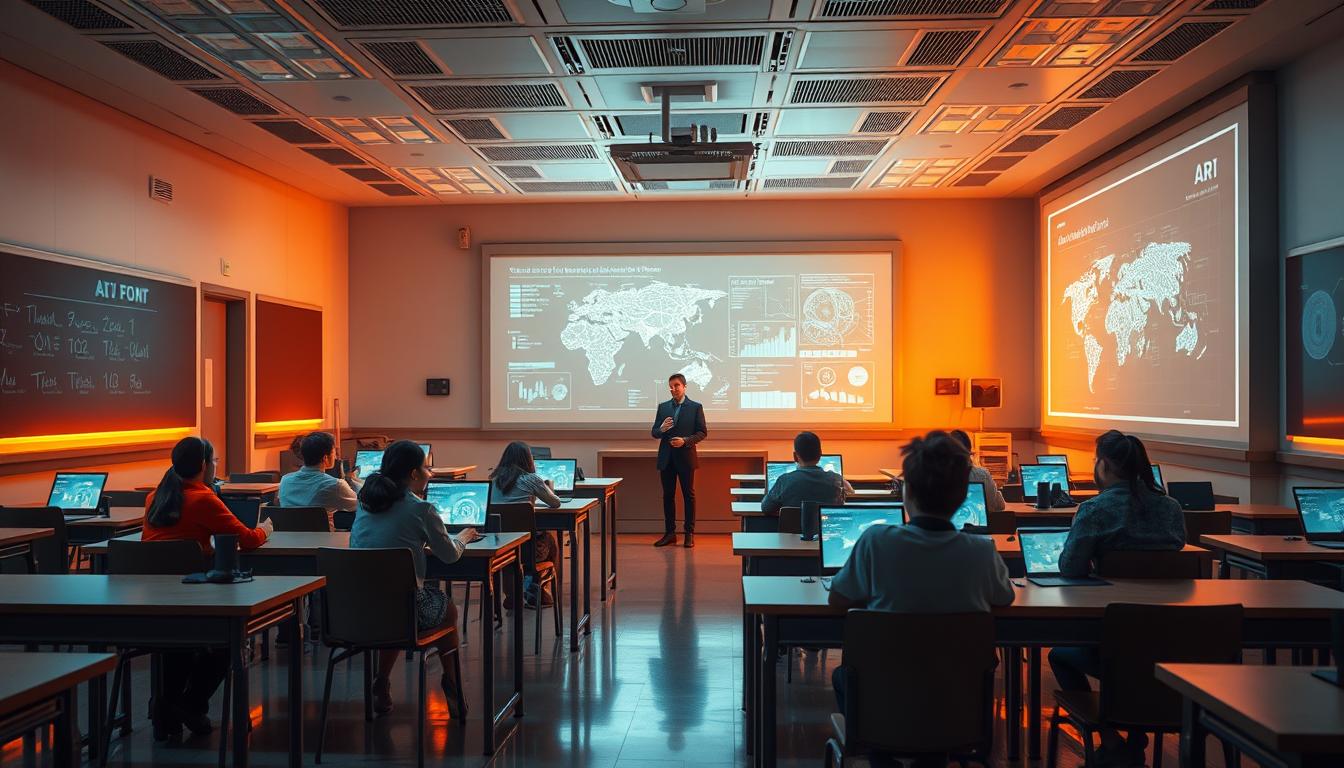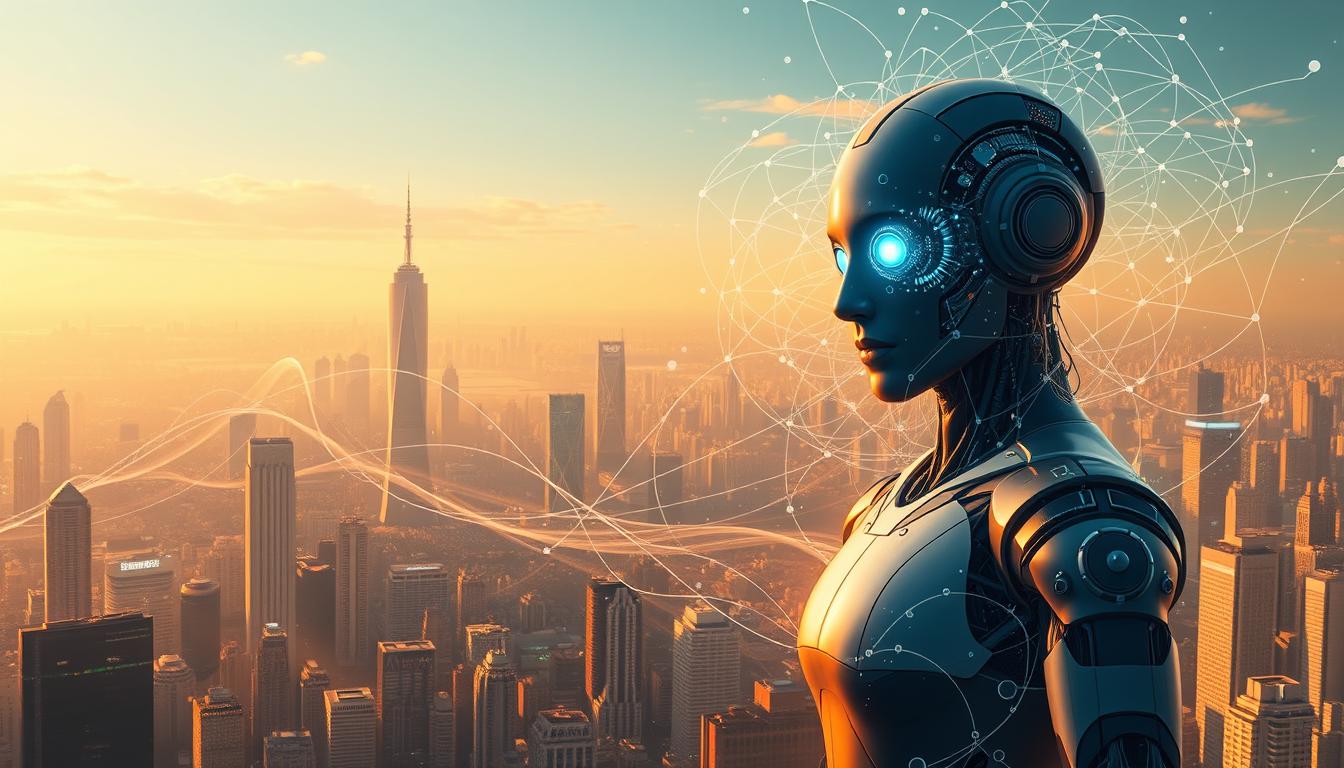Imagine waking up to the soft chime of your alarm, your smart assistant whispering, “Good morning! It’s a sunny day—perfect for your morning walk.” You smile, feeling understood, as if technology has become a thoughtful friend. This isn’t a sci-fi movie—it’s your life today, thanks to AI. Let’s take a heartfelt journey through the ways AI is weaving magic into our daily routines, making them more delightful, connected, and meaningful.
1. Smart Assistants and Voice Recognition
“Hey Siri,” “Okay Google,” and “Alexa” — these are more than just casual catchphrases. They’re gateways into a smarter lifestyle. AI-powered voice assistants have revolutionized how we interact with technology. From checking the weather to setting reminders and controlling smart home devices, these assistants are learning to understand our habits and preferences to serve us better.
The magic lies in Natural Language Processing (NLP), a form of AI that allows machines to understand, interpret, and respond to human language. Over time, these assistants become more personalized — recognizing your voice, understanding context, and even anticipating your needs. Want to order a pizza? You don’t need to touch your phone anymore — just ask.

2. Personalized Recommendations
Ever wondered how Netflix always seems to know what you’ll enjoy next? Or how Spotify serves you the perfect playlist? That’s AI in action, analysing your behaviour — what you watch, skip, like, and search — to offer content tailored to your tastes.
Retail platforms like Amazon use similar recommendation systems. Based on your browsing and purchasing history, AI suggests products that you’re more likely to buy. This not only improves user experience but also drives sales and engagement for businesses. Even YouTube and TikTok rely heavily on AI to determine what to show you next.

3. Healthcare Advancements
One of the most impactful applications of AI is in healthcare. AI is helping detect diseases earlier, analyze medical images with greater accuracy, and assist in treatment planning. Machine learning models can identify signs of conditions like cancer, diabetes, and heart disease — sometimes before doctors can — by analysing x-rays, MRIs, or lab results.
Wearable health tech like Fitbits, Apple Watches, and smart rings also use AI to monitor your health in real time. They track steps, heart rate, sleep cycles, oxygen levels, and even detect irregular heart rhythms, allowing for early intervention and better overall health management.
Mental health support is evolving, too. AI-powered chatbots like Wombat offer cognitive behavioural therapy (CBT) techniques through text conversations, making mental health care more accessible and stigma-free.

4. Smarter Transportation
AI is revolutionizing the way we get from point A to point B. Navigation apps like Google Maps and Waze use real-time traffic data, road conditions, and historical patterns to suggest the fastest routes. Behind the scenes, AI continuously processes massive amounts of data to optimize your journey.
Ride-sharing services such as Uber and Lyft also rely on AI for driver-passenger matching, pricing algorithms, and route optimization.
And then there’s the future of travel: self-driving cars. Companies like Tesla, Waymo, and Cruise are investing heavily in autonomous vehicles that use AI to interpret their surroundings, make decisions, and navigate roads without human intervention. These vehicles are still in development, but the potential for reducing traffic accidents and improving mobility is enormous.

5. Banking and Financial Services
AI is making banking smarter, faster, and more secure. Banks and fintech companies are leveraging AI for fraud detection, customer service, and personalized financial advice.
Every time you make a credit card transaction, AI algorithms scan for unusual patterns. If something seems off — like a sudden purchase in a foreign country — you may get a fraud alert in seconds.
Virtual financial advisors (robot-advisors) like Betterment or Wealth front use AI to help individuals manage investments based on their goals, risk tolerance, and market data. AI is also used in algorithmic trading, scanning markets and executing trades in milliseconds, far faster than any human could.

6. Education and E-Learning
Education is no longer confined to classrooms and textbooks. AI is powering a revolution in how we learn, making education more accessible, interactive, and personalized.
Platforms like Khan Academy, Duolingo, and Coursera use AI to analyze your progress and adapt lessons to suit your pace and style of learning. Whether you’re a visual learner or prefer text-based content, AI helps tailor the experience.
AI writing assistants like Grammarly go beyond spell-checking — they analyze tone, style, and clarity to help students and professionals communicate more effectively. AI tutors can also answer questions, explain concepts, and provide instant feedback, acting like a digital classroom assistant.

7. Workplace Automation
The workplace has undergone a dramatic shift, with AI at the forefront of a new era of productivity. Routine tasks — from data entry and scheduling to sorting emails and generating reports — are increasingly being handled by AI tools.
Software like Microsoft Copilot, ChatGPT, and Google Workspace AI help streamline workflows by drafting content, summarizing documents, and analysing data. In customer service, AI chatbots are handling thousands of queries simultaneously, providing instant responses and improving client satisfaction.
In sectors like manufacturing and logistics, AI-powered robots work alongside humans to increase efficiency, reduce errors, and enhance safety. This is not just about replacing jobs but augmenting human capabilities and allowing people to focus on more strategic, creative work.

8. Retail and Customer Experience
Shopping has become smarter thanks to AI. Online platforms use AI not only to recommend products but also to personalize the entire shopping journey — from browsing and searching to payment and delivery.
Visual search tools let you upload a picture to find similar items instantly. AI also powers virtual fitting rooms and AR features, letting you “try on” clothes or preview furniture in your home before buying.
Customer support has also gone digital. AI chatbots are available 24/7 to answer questions, process returns, and even make product suggestions. In physical stores, AI helps with inventory management, demand forecasting, and optimizing shelf placement to improve sales.

Final Thoughts
AI isn’t just technology—it’s a quiet companion, weaving threads of ease, joy, and connection into the fabric of our lives. It’s the playlist that lifts your spirits, the health alert that gives you peace of mind, the shortcut that gets you to a loved one faster. Yes, there are questions about privacy and ethics to navigate, but the potential for AI to make our days brighter, safer, and more meaningful is undeniable.
So the next time your phone finishes your sentence or your smart assistant dims the lights just right, take a moment to smile. That’s AI, working behind the scenes, making your everyday life a little more magical.






Thanks for the insightful breakdown! It’s refreshing to see platforms like AIGO Tools curating quality AI solutions-tools like AI Reply Assistant make smart tech accessible and practical for everyday use.